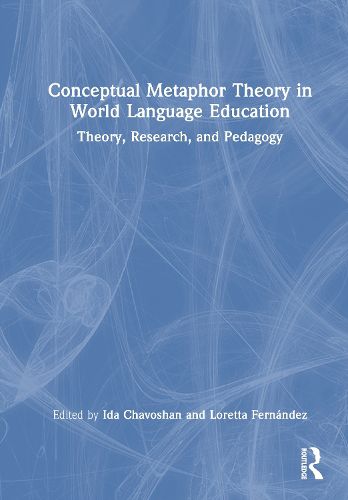Readings Newsletter
Become a Readings Member to make your shopping experience even easier.
Sign in or sign up for free!
You’re not far away from qualifying for FREE standard shipping within Australia
You’ve qualified for FREE standard shipping within Australia
The cart is loading…






This edited collection explores the scholarly and pedagogical implementations of Conceptual Metaphor Theory (CMT) in world language education. The chapters offer a diverse range of theoretical and pedagogical perspectives as well as methodologies aiming to achieve the following objectives:
Introduce novice linguists, novice researchers, and pre-service language teachers to CMT, its extensions, and its applications, while providing an overview of the current state of the discipline;
Shed light on new research and pedagogical practices for linguists, researchers, and language educators at all levels; Present theoretically founded and research-based examples of the pedagogical application of CMT across multiple world languages, including English, French, Mandarin, and Spanish; Highlight the experiences and perspectives of practitioner educators who have implemented CMT in world language education.
By addressing these objectives, the book aims to provide a comprehensive and insightful exploration of CMT's role in world language education, offering guidance and inspiration for both researchers and practitioners in the field.
$9.00 standard shipping within Australia
FREE standard shipping within Australia for orders over $100.00
Express & International shipping calculated at checkout
This edited collection explores the scholarly and pedagogical implementations of Conceptual Metaphor Theory (CMT) in world language education. The chapters offer a diverse range of theoretical and pedagogical perspectives as well as methodologies aiming to achieve the following objectives:
Introduce novice linguists, novice researchers, and pre-service language teachers to CMT, its extensions, and its applications, while providing an overview of the current state of the discipline;
Shed light on new research and pedagogical practices for linguists, researchers, and language educators at all levels; Present theoretically founded and research-based examples of the pedagogical application of CMT across multiple world languages, including English, French, Mandarin, and Spanish; Highlight the experiences and perspectives of practitioner educators who have implemented CMT in world language education.
By addressing these objectives, the book aims to provide a comprehensive and insightful exploration of CMT's role in world language education, offering guidance and inspiration for both researchers and practitioners in the field.